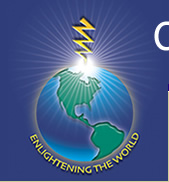
A Nearsighted Vision Quest
|
 |
|
| Maybeth Conway Senior Associate |
Let me just put this right out there. This issue of the Lens that centers on manifesting your vision presents a real challenge for me. Truth be told, I’m hopelessly nearsighted. I’ve worn very thick glasses since I was a toddler, and I’m not sure that I’ve had a single truly visionary moment in my 66 years. I am, however, a rational problem solver who welcomes a good challenge. So, here goes. Please join me as I embark on my nearsighted vision quest.
I think I’ll begin at the least visionary yet most reliable location I know: the dictionary. Merriam-Webster first tells me that vision is the ability to see: sight or eyesight. Okay, but that’s not the kind of vision I’m seeking. Then it says that vision is something that you imagine: a picture that you see in your mind. Now we’re making progress, but the picture is very fuzzy. Finally, it suggests that vision is something that you can see or dream, especially as part of a religious or supernatural experience. That’s all well and good, but it doesn’t really help me to narrow my leadership focus, and I’m always a bit leery when it comes to those supernatural experiences.
What happens when I travel to the synonym section and substitute the term “visionary”? It looks like I uncover an interesting paradox. As an adjective, “visionary” is synonymous with fantastic, idealistic, noble, ambitious, prophetic, and utopian. That’s more like it. However, it’s also a descriptor that means pretentious, impractical, unrealistic, delusional, and unworkable. Hmmm! If I investigate “visionary” as a noun, I find a similar enigma. A visionary is an enthusiast, an idealist, a prophet, a mystic, or a futurist. I also encounter a daydreamer, a fanatic, a zealot, a maniac, and a fool. These visionaries certainly are a complex and contradictory crew.
Perhaps I need to broaden my quest and head into cyberspace to see what I can learn from legendary visionaries. A quick search suggests that there are many lists, and many differences of opinion, about who is truly visionary. It does seem that Albert Einstein, Martin Luther King, Mohandas Gandhi, Bill Gates, and Steve Jobs tend to appear on almost every list. No wonder I’m feeling challenged—there’s not a woman’s name in sight!
The Internet also offers an endless supply of articles that attempt to identify the unique characteristics of the true visionary. Here are just a few that seem to hit the mark:
- Visionaries are constantly searching for new information to solve a problem or create a breakthrough.
- Visionaries see things through the mind’s eye long before others.
- Visionaries possess heightened sensibilities that account for their extraordinary perception as well as their frequent eccentricity.
- Visionaries are predictors who move freely from the present into the future.
- Visionaries are also dreamers with vivid imaginations and strong convictions.
- Visionaries persevere.
This list does seem to capture the essence of the visionary. But something important seems to be missing. I don’t think that my quest will feel complete until I include my own two cents’ worth. I’ve had the privilege, the blessing, the challenge, and occasionally the curse of associating with and working for some truly visionary leaders. As I reflect on those experiences, I’ve come to believe that one crucial descriptor should be added to my list. With the humility of a near-sighted rationalist, I’d like add the following bullet:
• Visionaries often need a sidekick.
Think about it for a moment. Don Quixote had Sancho Panza. Huck Finn rafted down the Mississippi with Jim. The Lone Ranger rode with Tonto, and Harry Potter’s wizardry often requires the wisdom of Hermione Granger. This list of visionary partnerships could be endless. In each instance, the hero boldly embodies the characteristics of nobility, ambition, prophesy, and utopian idealism that are associated with the best of the visionary. Meanwhile, in the background, the sidekick does damage control to minimize the annoying, impractical, unworkable and often downright foolish qualities that may plague the visionary hero. Frequently—with an unassuming manner, infinite patience, and a good measure of wit and wisdom—it’s the low-profile sidekick who quietly nurtures the prophetic potential of the hero. It may well be the sidekick who does the lion’s share of the legwork that eventually makes the vision a reality.
So there you have it. My vision quest is complete. From Merriam-Webster to the Internet to the annals of fine literature and finally to my own meager musings, my journey has helped me to develop a clearer understanding of the often baffling world of vision manifestation. My eyesight is not likely to improve anytime soon, and I’m not anticipating any magical mystical moments in my near future, but I suspect that I might have a deeper appreciation for the visionary leaders who cross my path. I hope you, too, have enjoyed the journey.
![]()
Center for Empowered Leadership ®
Email: info@cfel.org
Phone: 1.609.259.7911
